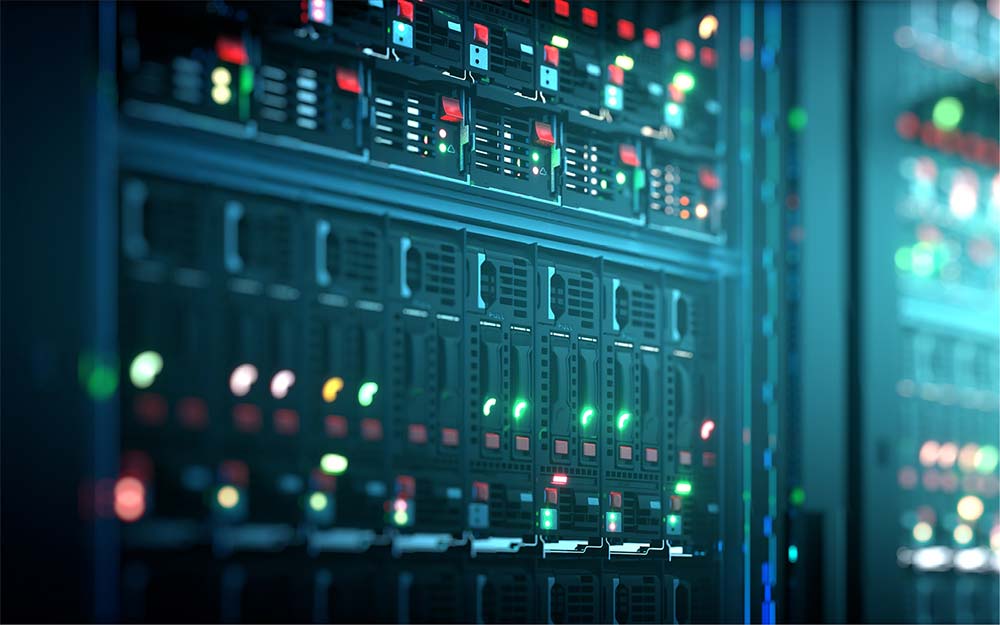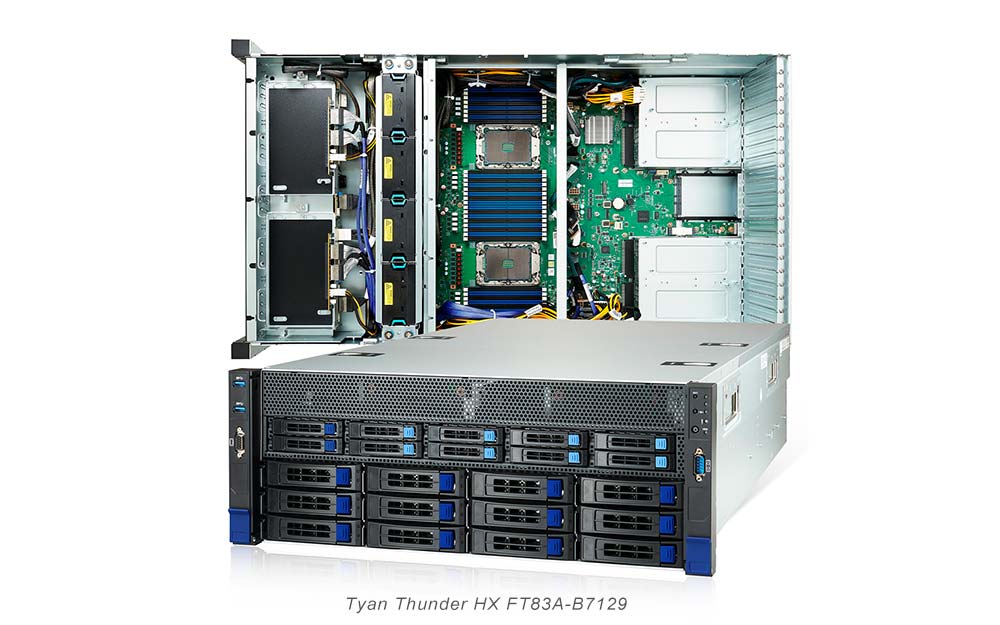Why heterogeneous computing is the flexible future of HPC
Products: FT83AB7129,

Today's highly complex workloads require different processing solutions and a hardware solution that supports CPU and GPU configurations.
The world of computing has changed radically in the last decade or so. We've seen a host of new examples of how businesses are adapting to the changing world. Organizations are faced with many different options to maintain their systems and data centers are being overhauled to keep pace with these shifts.
This can mean using resources outside corporate data centers: specifically, in the cloud, a way of working that has totally transformed the way organizations think about computing. But that doesn't mean companies have shifted everything into the cloud. There's still a question to be asked about what’s staying on-premise and what isn't and so it's vital to have the hardware to support all options.
The rise of cloud hasn't been the only change. Companies have become more aware of the importance of customer data and the need to analyse it more accurately – this has introduced new levels of artificial intelligence to computer systems. In addition, there's been a move away from conventional structured databases and a need to handle different types of unstructured data. We've also recently seen a shift to edge computing, as companies look to change the location of their processing.
The most obvious example has been the rise of the GPU for graphics processing but there are other examples of different chip architectures that have also come into their own. We're seeing companies introduce field programmable gate arrays (FPGAs), vision processing units (VPUs), and application specific integrated circuits (ASICs) into the mix – all of these are deployed for specific tasks. It is recognition that a one-size-fits-all approach to HPC is no longer sufficient. Hence the need for a modern 'heterogeneous' approach.

The current Gartner definition of heterogeneous computing is an architecture in which processors, all sharing a single memory, use more than one instruction set. This requires programs to be written differently for each of the dissimilar instruction sets.
The goal is to offer substantially better performance or cost by devoting the appropriate parts of the application to machine designs optimised for specific types of computing (e.g. Accelerated HPC, I/O-heavy compute and big data), making sure that organizations have the flexibility to handle different environments.
This is why it's so important to use the right hardware to begin with. When Tyan brought its Intel® Xeon®-based systems to the market, it offered businesses the opportunity to get on top of all the options and help plan for the future by handling all the emerging demands. Many of the new generation of processors also include additional components to integrate with other technologies (for example, SATA, PCI, RFID and more) without the need for further devices.
"With AI and cloud growth, our new servers based on 3rd Gen Intel® Xeon® Scalable processors are designed to deliver a diversity of workloads for high performance systems, like AI inference or deep learning platforms, to a cost-optimized high IOPS cloud storage platform," said Danny Hsu, Vice President of MiTAC Computing Technology Corporation's Server Infrastructure Business Unit.
For example, the Tyan Thunder HX FT83A-B7129 is a 4U dual-socket supercomputer supporting up to 10 high-performance GPU cards. Powered by dual 3rd Gen Intel Xeon Scalable processors and 32 DDR4 DIMM slots, the platform provides outstanding heterogeneous computing power for a variety of GPU-based scientific high performance computing, AI training, inference, and deep learning applications.
In the future, organizations will increasingly require server platforms that can handle these multiple demands. The time to look into this is now, so adequate planning can be carried out. There’s a need to draw up a checklist of what’s going to be needed and what processor type best suits core workloads. How much compute will take place in the cloud? What are the different demands on memory and power? How will any new platform integrate with other devices in the tech stack? The heterogeneous way will be the only way forward for the future as companies look to optimise the handling of all applications.
Built for the most demanding HPC workloads, the Tyan Thunder series is a line of world class barebones server systems based on Intel's latest technology, including 3rd Gen Intel Xeon Scalable Processors. For more information about our newest products, view the Tyan/Intel Product Catalog 2022.
The world of computing has changed radically in the last decade or so. We've seen a host of new examples of how businesses are adapting to the changing world. Organizations are faced with many different options to maintain their systems and data centers are being overhauled to keep pace with these shifts.
This can mean using resources outside corporate data centers: specifically, in the cloud, a way of working that has totally transformed the way organizations think about computing. But that doesn't mean companies have shifted everything into the cloud. There's still a question to be asked about what’s staying on-premise and what isn't and so it's vital to have the hardware to support all options.
Read: How to balance your HPC hardware with Tyan and Intel
Download: Practical hardware design strategies for HPC workloads in 2022
Download: Practical hardware design strategies for HPC workloads in 2022
The rise of cloud hasn't been the only change. Companies have become more aware of the importance of customer data and the need to analyse it more accurately – this has introduced new levels of artificial intelligence to computer systems. In addition, there's been a move away from conventional structured databases and a need to handle different types of unstructured data. We've also recently seen a shift to edge computing, as companies look to change the location of their processing.
Embracing heterogeneous computing
All of these changes mean that organizations have needed to take a fresh look at their computing options. The world that was dominated by the CPU has become more diverse and several alternative processing units have emerged, all with different functions and different strengths and weaknesses.The most obvious example has been the rise of the GPU for graphics processing but there are other examples of different chip architectures that have also come into their own. We're seeing companies introduce field programmable gate arrays (FPGAs), vision processing units (VPUs), and application specific integrated circuits (ASICs) into the mix – all of these are deployed for specific tasks. It is recognition that a one-size-fits-all approach to HPC is no longer sufficient. Hence the need for a modern 'heterogeneous' approach.

The current Gartner definition of heterogeneous computing is an architecture in which processors, all sharing a single memory, use more than one instruction set. This requires programs to be written differently for each of the dissimilar instruction sets.
The goal is to offer substantially better performance or cost by devoting the appropriate parts of the application to machine designs optimised for specific types of computing (e.g. Accelerated HPC, I/O-heavy compute and big data), making sure that organizations have the flexibility to handle different environments.
Choosing the right hardware
Of course, there are various challenges facing organizations implementing heterogeneous computing. There are power consumption issues to contend with – different chipsets will be more of a drain than others. But there are other issues too: not all architectures will consume memory in the same way or use the same instruction sets.This is why it's so important to use the right hardware to begin with. When Tyan brought its Intel® Xeon®-based systems to the market, it offered businesses the opportunity to get on top of all the options and help plan for the future by handling all the emerging demands. Many of the new generation of processors also include additional components to integrate with other technologies (for example, SATA, PCI, RFID and more) without the need for further devices.
"With AI and cloud growth, our new servers based on 3rd Gen Intel® Xeon® Scalable processors are designed to deliver a diversity of workloads for high performance systems, like AI inference or deep learning platforms, to a cost-optimized high IOPS cloud storage platform," said Danny Hsu, Vice President of MiTAC Computing Technology Corporation's Server Infrastructure Business Unit.
For example, the Tyan Thunder HX FT83A-B7129 is a 4U dual-socket supercomputer supporting up to 10 high-performance GPU cards. Powered by dual 3rd Gen Intel Xeon Scalable processors and 32 DDR4 DIMM slots, the platform provides outstanding heterogeneous computing power for a variety of GPU-based scientific high performance computing, AI training, inference, and deep learning applications.
In the future, organizations will increasingly require server platforms that can handle these multiple demands. The time to look into this is now, so adequate planning can be carried out. There’s a need to draw up a checklist of what’s going to be needed and what processor type best suits core workloads. How much compute will take place in the cloud? What are the different demands on memory and power? How will any new platform integrate with other devices in the tech stack? The heterogeneous way will be the only way forward for the future as companies look to optimise the handling of all applications.
Built for the most demanding HPC workloads, the Tyan Thunder series is a line of world class barebones server systems based on Intel's latest technology, including 3rd Gen Intel Xeon Scalable Processors. For more information about our newest products, view the Tyan/Intel Product Catalog 2022.

